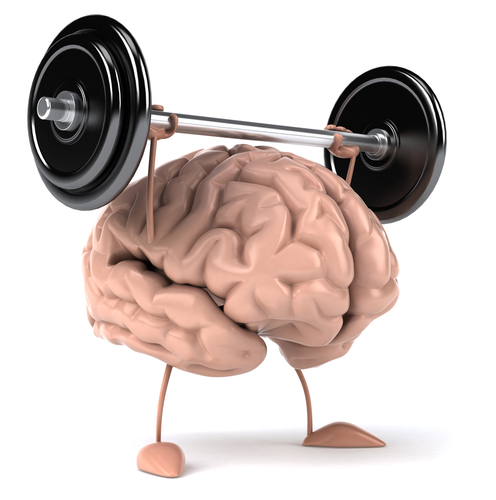Get to Know your Macros: Fats
A lot of what we are doing now in fitness and nutrition is undoing the mess that was created in the 80s, 90s and early 2000s. One of those messes was the fear created around consuming fat, and that eating fat would make you fat. This led to fat free everything, causing everyone to do their best to completely eliminate a very important macronutrient from their diets. Unfortunately, many people substituted carbs for fat and most food products replaced fat with sugar (and if not sugar, some other unhealthy artificial sweetener). Those fat free creations are the among the worst creations that you can put in your body (margarine for example). Let’s get it out of the way right now; eating fat will not make you fat. Eating vegetables doesn’t turn you into a vegetable. Eating chocolate doesn’t turn you into chocolate. Eating a supermodel doesn’t turn you into a supermodel.

Aqua Teen Hunger Force is for entertainment value only.
Eating good quality fats can help with a variety of factors.
Satiety
Eating quality fats are a good way to stay full. Especially if you are replacing carbs with fat. Fats are very satisfying and can curb cravings. As I briefly touched on in the protein piece that can be found here, carbohydrates can stimulate a huge swing in insulin levels in the body, causing cravings and the body to store excess sugar in the bloodstream as fat. (More on carbs next week, but it should be noted that carbs are not the devil either, so don’t go eliminating those either). Good quality fats do not cause that insulin spike, and will keep you fuller for longer.
Energy Levels
Good quality fats are a tremendously efficient form of energy. Fats contain 9 calories per gram, compared to 4 grams for carbohydrates and protein. This means that a smaller portion of fats can boost your energy more efficiently than other macronutrients.
Better Brain and Cell Health
Our brain and the cells within our body are made up of fats and cholesterol. Consuming fat ensures that these cells have the building blocks to maintain their health and ability to communicate with other cells.

Good Fats, Bad Fats and Sources of Fat
Not all fats are created equal. There are good fats, there are bad fats, and there are fats that can fall in between, depending on their consumer. Good fats should be consumed with every meal, bad fats should be severely limited, and in between fats should generally be consumed in moderation, depending on who you ask.
Good Fats
Good fats come in the form of nuts, seeds, vegetables and fish. They are known as monounsaturated and polyunsaturated depending on their chemical bonds.
Monounsaturated fats have a single carbon to carbon bond (hence: “mono”). Good sources of monounsaturated fats include oils like olive and canola oil, nuts like almonds and macadamia nuts, as well as avocados and olives.
Polyunsaturated fats have two or more double bonds in its carbon chain. Polyunsaturated fats are essential, meaning they are not produced by the body, and must be ingested through the diet. These include many seed varieties (sunflower and pumpkin seeds are good examples), fatty fishes like salmon and trout, nuts like walnuts and pecans, and oils like corn oil and flaxseed oil.

Bad Fats
Trans fats are considered unhealthy. They are man made fats that come from hydrogenation, a process that turns liquids into solids. Foods on the trans fat list are fried foods like doughnuts and french fries, desserts like ice cream and cookies, as well as other fairly obvious unhealthy choices like frosting, pancakes, and margarine. Eating these kinds of fats will definitely make you fat. It should be noted that the items listed above can be made with alternative recipes which may not include trans fats, so before you slap that cookie out of grandma’s hand, ask her where it came from.

In Between Fats
Depending on who you ask, and who is consuming them, saturated fats are on the in-between list. Saturated fats hold as many hydrogen atoms as possible on a chain of carbon atoms. They include animal fats like meat, pork, chicken and fish, oils like coconut oil and palm oil, and dairy products like cheese, milk, cream, and butter. Some research has shown that eating saturated fats can increase overall cholesterol, and increase the risk of heart disease. However, more recent research appears to be signifying that there is less of a risk of these two factors than previously indicated.

So What Does it All Mean?
With this new knowledge of fats, you should be able to recognize that eating fat will not make you fat, at least not in the way many people think it does. In fact, substituting fats for carbs and fats for sugars will make you much less fat than the opposite. For many of you who were a part of the low-fat craze in the past, this will be hard to accept and change, but it’s the truth.
You should also be able to recognize which fats are healthy fats and should be a part of the diet. Try and include a selection from the good fats with each and every meal.
You should know which fats are bad for you, and which should be limited if not eliminated from your diet. Hopefully this post isn’t what alerted you to the fact that french fries and frosting are bad for you. If so, we should probably have a chat and look at your diet.
As always, let me know how I can help and if you have any questions.

